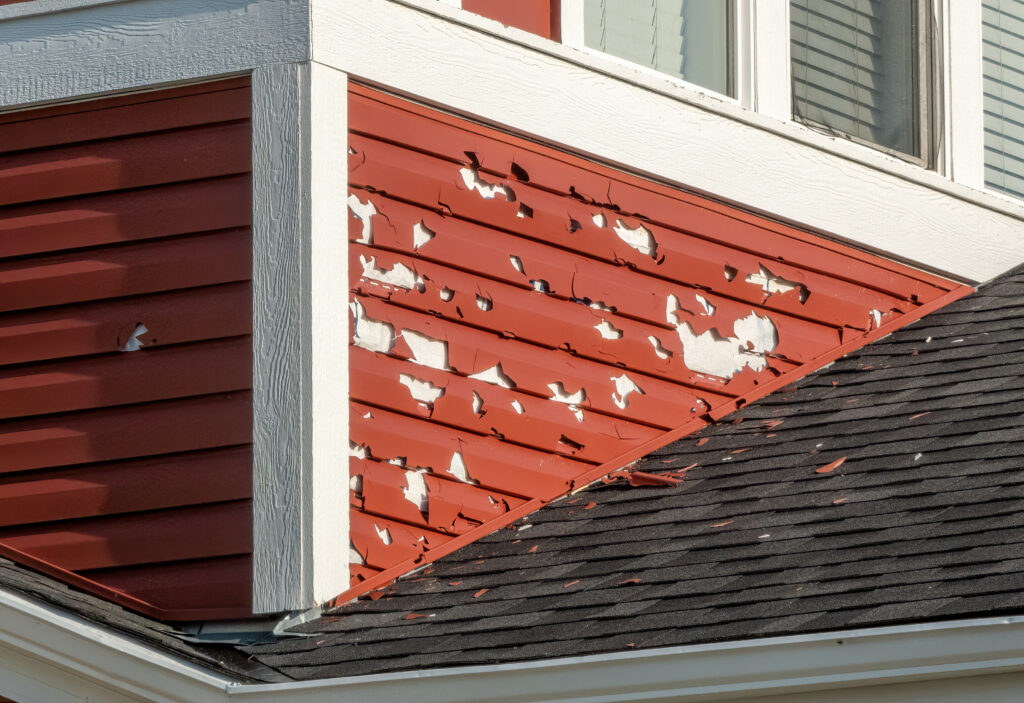The Dos and Don’ts of Filing Siding Damage Insurance Claims
When severe weather strikes, siding often takes the brunt of the damage. Strong winds, hail, and flying debris can leave dents, cracks, or holes that compromise your home’s appearance and protection. Filing a siding damage insurance claim can feel overwhelming if you don’t know what steps to take. Understanding the right approach helps you avoid costly mistakes and improves your chances of getting a fair settlement from your insurance company.
Documenting Siding Damage the Right Way
Do Take Clear Photos and Videos
As soon as you notice siding damage, grab your phone or camera and start documenting. Capture wide shots of each side of your house and close-ups of every damaged panel. Photograph dents, cracks, holes, and any pieces that have fallen off. Record a video walkthrough that shows the damage in real time. Clear documentation gives the insurance adjuster undeniable proof of the condition of your siding, which increases the likelihood of claim approval for both roofing and siding damage.
Don’t Wait Too Long to Record the Damage
Putting off documentation can weaken your claim. If days or weeks pass, it becomes harder to prove that the storm caused the siding issues. Insurance companies may argue the damage happened later or from another source and is not related to a storm. Always document immediately, even if you aren’t planning to file a siding damage insurance claim right away.
Understanding Your Policy Before Filing
Do Review What Your Insurance Covers
Every policy has different levels of coverage for siding. Some policies cover full replacement if damage affects only one side, while others may only cover repairs to the damaged sections. Read your policy carefully so you know what to expect. If you’re unsure, call your insurance provider and ask them to explain coverage details in plain terms. Siding replacement is routinely part of storm restoration projects when legitimate loss is documented.
Don’t Assume All Damage Gets Covered
Insurance doesn’t cover everything. Cosmetic blemishes like small scratches, fading, normal wear and tear, or lack of maintenance usually won’t qualify for a claim. It’s important to know that insurers often separate cosmetic siding damage (where the siding just looks bad) from functional damage (where the siding no longer protects your home). Cosmetic issues may not be included in your policy, but functional damage is more likely to qualify for replacement. Knowing this before filing prevents disappointment and helps you prepare realistic expectations.
Avoiding Common Claim Mistakes
Do File Your Claim Promptly
Most insurance companies require claims within a set timeframe after the storm. Waiting too long could result in a denied claim. Filing quickly also allows the adjuster to inspect fresh damage before repairs begin. Prompt action ensures your siding damage insurance claim stays valid. Siding is often included in Colorado homeowners’ insurance coverage when it’s damaged by a storm, and many local roofing companies help homeowners navigate these siding claims at the same time as roof repairs.
Don’t Start Repairs Before an Inspection
It’s tempting to patch things up right away, but making repairs before the insurance adjuster visits can cause problems. They need to see the damage in its original state. If repairs get made beforehand, you may lose evidence that supports your claim. Protect your home from leaks by using temporary coverings like tarps, but hold off on permanent fixes until the adjuster gives the go-ahead.
Working With Insurance Adjusters

Do Be Present During the Inspection
When the adjuster arrives, walk through the damage with them. Point out all affected areas and make sure nothing gets overlooked. Your presence shows that you’re engaged and ensures the adjuster documents every part of the siding damage. Having a roofing or siding professional present can also strengthen your case since they can explain the extent of repairs needed.
Don’t Rely Only on the Insurance Estimate
Insurance adjusters work for the insurance company, not for you. Their estimate may not cover the true cost of siding replacement or repair. Always get a second opinion from a trusted siding contractor. This extra estimate helps you negotiate if the insurance company’s payout doesn’t match the actual repair costs.
Partnering With a Trusted Contractor
Do Choose an Experienced Local Company
Pick a contractor with experience in both siding damage and insurance claims. Local companies understand common storm issues in Colorado and have worked with insurance providers in the area before. They can provide detailed repair estimates and meet with the adjuster to make sure nothing gets overlooked. This kind of support often makes the difference in securing fair compensation.
Don’t Sign With Storm Chasers
After a hailstorm, out-of-state contractors often flood neighborhoods with offers. Many make promises they don’t keep, leaving homeowners with poor-quality work or unfinished projects. Stick with a local, established contractor who has a strong reputation and physical presence in the community. Many out-of-state companies will only focus on your roof insurance claim and may not have the expertise to include your siding in your insurance claim.
Keeping Records Throughout the Process
Do Save Every Piece of Paperwork
Keep a folder with all your claim-related documents. Include your policy, adjuster reports, contractor estimates, receipts, and copies of your claim forms. Detailed records create a clear paper trail, which protects you if disputes arise with your insurance company. If your claim is denied, request a detailed written explanation and seek contractor and adjuster input, focusing on functional loss.
Don’t Rely on Verbal Agreements
Never depend on a handshake or verbal promise. Always get agreements in writing. Whether it’s from your insurance provider or your contractor, written documentation protects you from misunderstandings and ensures everyone stays accountable.
Protecting Your Investment After Repairs
Do Ask About Warranty Coverage
When your siding gets repaired or replaced, check on available warranties. Many siding products come with manufacturer warranties, and contractors often provide workmanship guarantees. This ensures long-term protection for your investment.
Don’t Forget Preventive Maintenance
Once your siding is fixed, keep it in good shape. Trim nearby trees, inspect siding regularly, and address small issues quickly. Preventive care helps you avoid future damage and strengthens any future siding damage insurance claim by showing you’ve maintained your home properly.
Ready to File Your Claim? Let’s Get Started Together
Filing a siding damage insurance claim doesn’t have to be stressful. By documenting damage carefully, filing quickly, and working with a trusted local contractor, you protect both your home and your finances. J&K Roofing has years of experience helping homeowners in Denver, Aurora, Boulder, Littleton, Lakewood, Highlands Ranch, and surrounding areas navigate insurance claims for siding and roofing damage. Our team knows how to guide you through every step, from inspection to repair.
If you suspect your siding has been damaged, don’t wait. Call J&K Roofing today and get the guidance you need for a smooth and successful insurance claim process.

